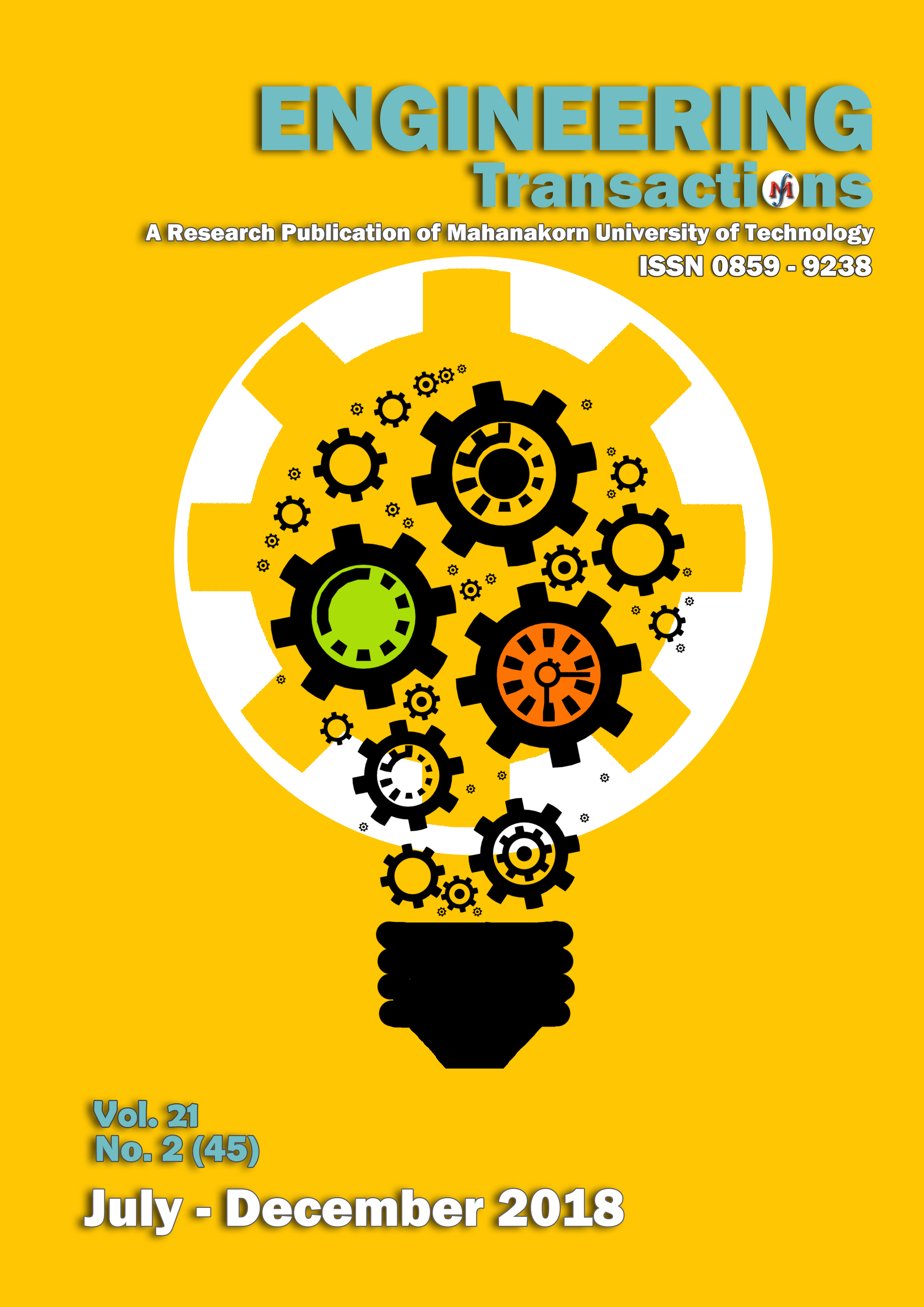A coupled pH and level control in pH process by data-driven based, input-output linearization
Main Article Content
Abstract
A pH process is one of the essential units used in many industries for preparing substance to be under proper conditions before sending to consequent units. A highly nonlinear of pH characteristics, process disturbances, process condition, and interaction between control pairs create difficulty in developing a high-quality physical model for a controller development. In this work, a data-driven based control is presented to handle a coupled control of the pH and liquid level in the pH reactor. A real-time, estimation of the process data is implemented to provide robustness in empirical modeling. This developed model is used in a formulation of a discrete-time, input/output (I/O) linearizing controller. The proposed control method has a simple model structure and controller equations that are suitable for a control application. The proposed control method is embedded in myRIO, and its performance is evaluated and compared with the PI controller through the servo test with a bench-scale pH reactor in real-time. The experimental results showed that the proposed control method provides faster response and less overshoot in the outputs than the PI controller.
Article Details
Copyright @2021 Engineering Transactions
Faculty of Engineering and Technology
Mahanakorn University of Technology
References
F. G. Shinskey, pH and plan control in process and waste streams, Wiley, New York, 1973.
J. I. Horiuchi, T. Shimizu, K. Tada, T. Kanno and M. Kobayashi, “Selective production of organic acids in anaerobic acid reactor by pH control”, Bioresource technology, vol. 82, no. 3, pp.209-213, 2002.
S.-E. Oh, S. Van Ginkel and B. E. Logan, “The Relative Effectiveness of pH Control and Heat Treatment for Enhancing Biohydrogen Gas Production”, Environmental Science & Technology, vol. 37, no. 22, pp.5186-5190, 2003
M.A. Henson and D.E. Seborg, “Adaptive nonlinear control of a pH neutralization process”, IEEE Transactions on Control Systems Technology, vol. 2, no. 3, pp.169-182, 1994
S. Salehi, M. Shahrokhi and A. Nejati, “Adaptive nonlinear control of pH neutralization processes using fuzzy approximators”, Control Engineering Practice, vol. 17, no.11, pp. 1329-1337, 2009
S. R. Navghare and G. L. Bodhe, “Design of Adaptive pH Controller Using ANFIS”, International Journal of Computer Applications, vol. 33, no. 6, pp. 41-48, 2011
B. Alina and C. Mădălina, “Internal model control for wastewater ph neutralization process”, 2016 8th International Conference on Electronics, Computers and Artificial Intelligence (ECAI), Ploiesti, pp. 1-6, 2016
T. Srihawan and C. Panjapornpon, “Coupled control between pH and level of a process with multi-titrated concentrations by input/state linearization”, 11th IEEE International Conference on Control & Automation (ICCA), Taichung, pp. 1031-1036, 2014
M. Fliess and C. Join, “Model-free control”, International Journal of Control, vol. 86, no. 12, pp. 2228-2252, 2013
Z. Hou and S. Jin, “Data-Driven Model-Free Adaptive Control for a Class of MIMO Nonlinear Discrete-Time Systems”, IEEE Transactions on Neural Networks, vol. 22, no. 12, pp. 2173-2188, 2011
J. Chen, Y. Peng, W. Han and M. Guo, “Adaptive fuzzy sliding mode control in PH neutralization process”, Procedia Engineering, vol.15, pp. 954-958, 2011
Y. Yang and Q. Wu, “A neural network PID control for PH neutralization process”, 2016 35th Chinese Control Conference (CCC), Chengdu, pp. 3480-3483, 2016
J. D. Rojas, F. Tadeo and R. Vilanova, “Control of a pH neutralization plant using the VRFT framework”, 2010 IEEE International Conference on Control Applications, Yokohama, pp. 926-931 , 2010
D. E. Rivera, M. Morari and S. Skogestad, “Internal model control: PID controller design”, Industrial & Engineering Chemistry Process Design and Development, vol. 25, no. 1, pp. 252-265, 1986


